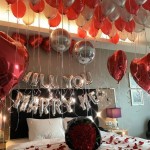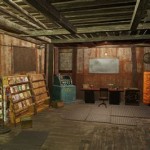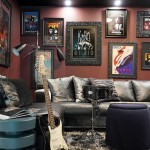Decorative Lighting Design
Decorative lighting design plays a crucial role in shaping the ambiance and functionality of interior and exterior spaces. It transcends mere illumination, encompassing artistic expression and enhancing the overall aesthetic appeal of an environment. From residential homes to commercial establishments, thoughtfully chosen decorative lighting fixtures can transform a space, highlighting architectural features, creating focal points, and setting the desired mood.
The principles of decorative lighting design involve a multifaceted approach. One key aspect centers around understanding the interplay of light and shadow. Strategic placement of light fixtures can create depth and dimension, drawing attention to specific areas or objects within a space. This interplay can also be used to mask imperfections or create a sense of drama and intrigue.
Another critical consideration is the color temperature of light. Measured in Kelvin (K), color temperature significantly impacts the perceived atmosphere. Warmer color temperatures (2700K-3000K) evoke a cozy and inviting feel, often employed in living rooms and bedrooms. Cooler temperatures (4000K-5000K) promote alertness and focus, making them suitable for workspaces and kitchens. Neutral white light (3500K-4000K) offers a balanced approach, suitable for general illumination.
The selection of appropriate fixtures forms the backbone of decorative lighting design. Chandeliers, pendant lights, wall sconces, and table lamps are just a few examples of the wide array available. Each fixture type contributes a unique aesthetic element, influencing the overall style and character of a space. For instance, a crystal chandelier can infuse a room with elegance and grandeur, while minimalist pendant lights contribute to a contemporary and streamlined aesthetic.
Materiality plays a significant role in the visual impact of decorative lighting. The materials used in fixture construction influence light diffusion and contribute to the overall style. Glass, metal, wood, and fabric each offer distinct aesthetic qualities. For example, frosted glass diffuses light softly, creating a warm and ambient glow, while metallic finishes can reflect light, adding sparkle and vibrancy.
Scale and proportion are crucial factors in achieving a balanced and harmonious lighting scheme. Oversized fixtures can overwhelm a small space, while undersized fixtures may appear insignificant in a larger area. Careful consideration of the size and scale of fixtures relative to the surrounding environment ensures visual harmony and prevents any element from appearing disproportionate.
Layering different types of lighting is a fundamental technique in decorative lighting design. Ambient lighting provides general illumination for the entire space. Task lighting focuses on specific areas where activities such as reading or cooking take place. Accent lighting highlights architectural features or artwork, adding depth and visual interest. A well-executed layered lighting scheme creates a dynamic and functional environment.
Energy efficiency is an increasingly important consideration in contemporary lighting design. LED technology has revolutionized the industry, offering significant energy savings and longer lifespan compared to traditional incandescent bulbs. Incorporating energy-efficient lighting solutions not only reduces environmental impact but also lowers operating costs in the long run.
Integration with smart home technology is another emerging trend in decorative lighting design. Smart lighting systems allow users to control lighting remotely, adjust brightness and color temperature, and schedule lighting changes according to their needs. This level of control enhances convenience, energy efficiency, and personalization.
The application of decorative lighting design principles varies depending on the specific environment. In residential settings, the focus often revolves around creating comfortable and inviting spaces that reflect the homeowner's personal style. Commercial spaces, on the other hand, may prioritize functionality and brand representation, utilizing lighting to enhance the customer experience and create a specific atmosphere.
Exterior lighting design extends the principles of interior lighting to outdoor spaces. Landscape lighting can highlight architectural features, pathways, and gardens, enhancing safety and security while creating a welcoming ambiance. Facade lighting can emphasize the building's design and create a striking visual impact at night.
The evolution of decorative lighting design continues to be shaped by technological advancements and evolving aesthetic trends. New materials, innovative fixture designs, and smart lighting technologies provide endless possibilities for creating dynamic and engaging lighting schemes. By understanding the fundamental principles and staying abreast of current trends, designers can create spaces that are both visually stunning and functionally effective.
Collaboration with lighting professionals is often beneficial, particularly for complex projects. Lighting designers possess the expertise to develop comprehensive lighting plans that address all aspects of illumination, from functionality and aesthetics to energy efficiency and integration with other building systems. Their knowledge and experience can ensure a successful and impactful lighting scheme.

Lighting And Mood The Importance Of Decorative In Architecture Amusement Logic
Decorative Lighting Fixtures Enhance Traditional Design

Designing With Light Exploring Decorative Lighting
Decorative Lighting Fixtures Enhance Traditional Design

How To Use Decorative Lighting In Your Homes The Interior Editor

How To Use Decorative Lighting In Your Homes The Interior Editor

What Is Decorative Lighting Hunker

Hotel Lighting Design Tips Public Area Opple Global

Luxury Interior Lighting Design By Hill House Interiors

This Decorative Lighting Range Is Adaptable In Architectural And Urban







